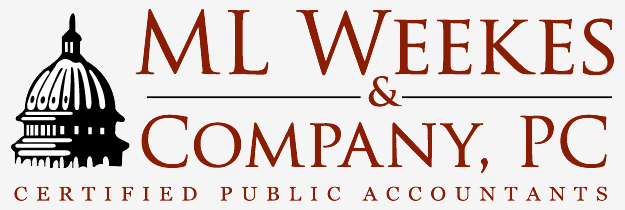Indirect Cost (Facilities and Administrative) Rate Services

Since our Firm's inception our core business has been the analysis and application of cost allocation practices. The foundation of these services is the development of indirect cost rates that meet the cost recovery goals of our clients and the compliance requirements surrounding publicly funded contracts. For both new awardees and the experienced organization, this process can be challenging and complex and can divert critical resources from ongoing operations.
We have extensive experience preparing provisional and final indirect costs rates, long and short-form facilities and administrative (F&A) cost rates, and incurred cost submissions on behalf of our clients. We have prepared hundreds of indirect rate proposals and regularly work with DHHS, DoD, DOL, USAID DOI, HUD and numerous other federal agencies to successfully obtain the most favorable rates for our clients.
The firm uses diagnostic tools, benchmarking and alternative approaches to recommend and develop tailored indirect cost allocation methods that consider the business operations, competitive environment and the particular rules applicable to each organization.
- Indirect rates – Preparation, Review, Negotiation
- Diagnostic Reviews of Indirect Rates and Cost Allocation Methods
- Incurred Cost Submission (ICS)
- Core Service Rate Preparation
Indirect rates – Preparation, Review, Negotiation
Organizations that receive and administer government funding are often required to obtain an approved indirect (overhead) cost rate in order to be reimbursed for indirect expenses related to government grants and contracts. To complete the approval process the organization must submit a proposal to the appropriate agency and then successfully negotiate the terms of the rate.
We prepare rates for contract and grants recipients utilizing the methods most applicable to your organization and the terms and conditions of funding including:
- Hospitals and Healthcare Systems – Research, clinical trials and patient care rates prepared in conjunction with Medicare Cost Report
- Colleges and Universities – “Long” and “Short” form F&A Rates
- Not-for-profit organizations – Simplified, Multiple Base and Direct Allocation Methods
- Commercial Contractors – Estimating and billing rates, Forward Pricing Rate Agreements (FPRAs), and Incurred Cost Submissions
The Federal and State government rules surrounding the preparation of indirect (overhead) rates and required submissions vary according to the type of organization and the overall funding. We are knowledgeable of the various regulations and agency guidance, will review your circumstances and determine the correct appropriate application to your organization — We are dedicated to enhancing indirect cost recovery, while reducing compliance risk.
The benefits of using our team include:
- Customized rate model adapted to your needs
- Knowledge and experience in the application of allocation rules
- Proper segregation of direct versus indirect costs
- Skilled information systems personnel to streamline data gathering and input
- Experience with the negotiation process and government agencies and personnel
- Independent team with the skills to complete the entire rate development, submission and negotiation process with limited support
Our extensive experience in preparing indirect rates provides us with the unique capability to customize our services to each client’s specific needs, while completing our work in a timely and efficient manner. We have the resources and skills to support your organization through all aspects of the rate preparation and negotiation process.
↑ Return to topDiagnostic Reviews of Indirect Rates and Cost Allocation Methods
We have developed a metric based approach for performing diagnostic review of our client’s existing indirect cost allocation practices. Our reviews are a cost-effective way to help make sure your indirect rates are compliant and fairly represent your cost allocation and recovery. Diagnostic reviews are typically an on-site, focused analysis of an indirect rate calculation and supporting documentation. These reviews are valuable as a means of assessing compliance with applicable laws, regulations and agency policy. A major benefit of the diagnostic review is that the recommendations we provide often result in enhanced indirect rate calculations and help facilitate your organization’s rate negotiations.
The diagnostic review is focused on direct and indirect cost recovery and compliance through:
- Determining the quality of data and allocation statistics
- Identifying alternate methods of allocation
- Analyzing the composition of cost pools and allocation bases
- Reviewing the treatment of “red flags” that trigger audit and negotiation issues
- Reviewing for unallowable costs
- Reviewing for consistency with cost disclosures and policies
Indirect rate submissions require a certification by a senior responsible officer. Our diagnostic review helps the organization minimize risk accompanying this process and assists in defining your negotiation strategy. Our proven approach will help your organization achieve its goals and optimize indirect cost recovery.
↑ Return to topIncurred Cost Submission (ICS)
If your contract has an “Allowable Cost and Payment” clause, government regulations require annual “incurred cost submissions” to certify direct and indirect costs billed to the government or a prime contractor. This can be a time consuming and sometimes an intimidating activity and may not be the most efficient use of company’s accounting staff.
Working with your staff we can identify appropriate and consistent costing methodologies for developing overhead, fringe benefit, general and administrative and intermediate and home office “pools” Facilities Capital Cost of Money rates and the appropriate allocation bases. We are also keenly aware of the risk of including “unallowable” or costs that have statutory maximums to protect your interest and avoid potential audit issues, penalties and interest.
Our team has also developed an expertise to work with your staff to maximize the use of technology in computing the indirect rate computations and provide “real-time” information to better manage your costs and ultimate profitability. We use downloads from your accounting system when possible and advanced Excel formulas and functions to increase the accuracy and decrease the time needed to assemble the necessary schedules. Our submissions are designed to fully meet the DCAA “requirements” including supporting data and schedules which have been incorporated directly in the Federal Acquisition Regulation.
↑ Return to topCore Service Rate Preparation
Core services, including service centers and other operations that regularly perform fee-based services for internal and external customers are subject to specific rules applicable to the development of “charge out” rates. Many hospitals, as well as colleges and universities provide these services on a routine basis. Examples include laboratories, wind tunnels, animal care, materials testing, and many others. ML Weekes has experience in the application of the rules pricing concepts and guidance related to animal care facilities.
We perform cost-benefit and benchmarking studies to help determine if existing cost centers are profitable, or if the service is available at a reduced rate from an outside source. Using our analytical techniques, we provide recommendations for the establishment of service centers for operations where a competitive advantage may exist.
↑ Return to top
